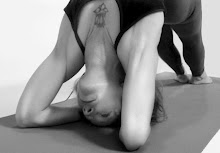Satya, Truth
All the misery the world contains has come through wanting pleasure for oneself"
Shantideva, The Way of the Bodhisattva
Shambala Publication, Inc.
ISBN 1-57062-253-1
Truth is the second Yama, and just as difficult to follow as Non-harming. Truth can seem to be a relative thing - when one clings to false views, ego, or is ignorant of certain facts a situation can seem to be one way when it is in fact completely different. How many times recently have we heard in the news that an innocent man has been freed from prison or even from death row by the new miracle of DNA evidence which has shown that he could not possibly have committed a terrible crime? We so easily jump to conclusions based on appearances, assumptions, preconceptions when keeping an open mind and making a careful evaluation of all arguments would be best.
In Patanjali's Yoga Sutras, it is ignorance (avidya) that is the root of all other afflictions, or kleshas. These five kleshas are the cause of future suffering:
avidya - ignorance/lack of knowlege - if you know nothing, you fear everything. How can you make a reasonable decision without knowlege of your subject? How can you deal with people if you don't try to know them? Conflicts occur because of fear; get to know others, fear disappears, conflicts disappear.
asmita - ego/I am-ness - if you always think only of yourself and never of others you may often find yourself making others angry with you. Learning to put yourself in someone else's shoes and understanding how they feel before you say or do something can help you prevent misunderstandings and promote better relations with your family, friends, and coworkers.
raga - attachment, passion, desire - clinging to much to things or people in a negative manner can drive them away. It is one thing to love someone so much that you will protect them from harm, but quite another to smother them so they cannot grow as human beings. That old saying "if you love something, set it free" is a truism on non-attachment. Besides, the result may delight you even more as those you love flower into new and more beautiful versions of themselves!
dvesha - aversion, dislike - there are always things you dislike, but to allow this to rule yourself and control how you behave causes you to suffer even if you do not recognize this. Hatred breeds fear and changes how others view you, particularly how the object of your dislike or hatred views you. It may even change how your friends view you if they think your view is unreasonable. Consider those who are controlled by phobias - they are controlled by aversions to heights, the outdoors, using elevators, etc. to the point of nausea and inability to function. Others are controlled by a fear or hatred of certain ethnic groups or skin colors or religions. These people tend to separate themselves from society as a whole and become quite dangerous to others.
abhinivesha - will to survive, fear of death - this may seem like a reasonable thing to maintain, everyone wants to live, but taken to extremes people again become simply fearful and cannot function joyfully. How can you live in the moment if you are constantly living in fear of death? Everyone and everything must die one day so why not fully live? Few things brought this home for me more acutely than the great duct tape run - everyone was encouraged to go out and buy plastic sheets and duct tape to make a little safe room in their homes to keep out anthrax and poison gas in case of a terrorist attack. So many Americans immediately ran out to their local hardware stores and bought every bit of plastic and duct tape they could. The people who make duct tape and plastic made alot of money, the hardware stores made alot of money, the shareholders made alot of money, alot of people were scared out of their wits. There was no terrorist attack, but even if there had been, would those preparations have done any good? Years ago, in Bhopal India, a terrible accident at a chemical plant in the middle of the night killed thousands of sleeping families. No one had any warning.
It makes no sense to fear death. Be present in your life now. The Truth will always be there whether it is spoken or not. The Truth cannot be hidden.




